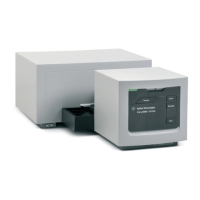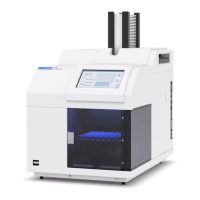Agilent 8453 UV-visible Spectroscopy System Operator’s Manual 49
Good Measurement Practices 3
General Considerations
Photosensitive Samples
A few substances are very photosensitive. They degrade or undergo
photochemical reactions if exposed to light. This can be easily seen by a
decrease of sample absorbance over time.
Use of Filters
The shorter wavelength, higher-energy UV light is most likely to degrade
photosensitive samples. If you have a problem, you can selectively block
portions of the UV spectrum with a UV cut-off filter. An optical filter wheel
assembly with three cut-off filters is available for the spectrophotometer. The
cut-off wavelength of the filter you choose should be low enough that it does
not eliminate important spectral information but high enough that it blocks
the light that could degrade your sample. If you use a filter with your samples,
you must use the same filter when you make your blank measurement.
Turning the D
2
-Lamp off
The short wavelength radiation leading to photodegradation comes from the
light of the D
2
-lamp. For application where readings are taken at wavelengths
above 400 nm, the D
2
-lamp can be turned off. The light intensity supplied by
the Tungsten lamp is sufficient for a good signal to noise ratio over the
wavelength range 400–1100 nm. When using cells with small apertures, you
should check the signal to noise ratio by making sample measurements under
conditions of your application.

